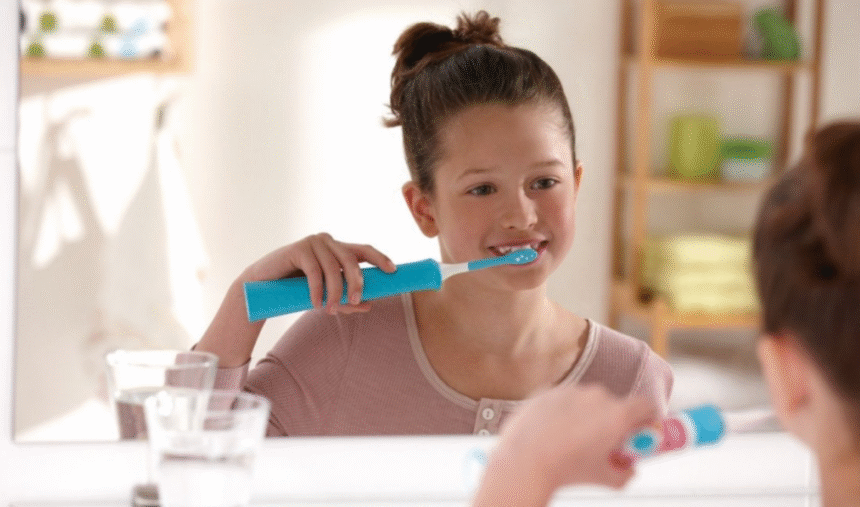Why Choosing the Right Toothbrush Matters
If ever there was a small tool with a big impact on oral health, it’s the toothbrush. While it might seem like a simple choice, selecting the right toothbrush involves more than just picking a color or brand from the shelf. The options available today range widely, soft or firm bristles, manual or electric, varying head sizes, and handles designed for comfort or precision. Each detail can influence how effectively teeth are cleaned, how well gums are protected, and even how comfortable daily brushing feels. Far from a one-size-fits-all item, the ideal toothbrush fits into a personal oral care routine, supporting healthier teeth and a confident smile that lasts.
- Why Choosing the Right Toothbrush Matters
- Bristle Firmness and Its Role in Oral Care
- Head Size, Shape, and Ergonomics
- Manual vs. Electric: Finding the Right Fit
- Specialized Toothbrushes for Unique Needs
- Enhancing Your Oral Routine with the Right Tool
- Innovations and Sustainability in Toothbrush Design
- Matching Your Toothbrush to Your Lifestyle
- The Importance of a Positive Brushing Experience
- Final Thoughts on Toothbrush Impact
Bristle Firmness and Its Role in Oral Care
Understanding why the right toothbrush matters might not be obvious at first glance. Many might assume any brush can do the job, but subtle differences can make a significant impact. Take bristle firmness for example. Those with sensitive gums or enamel erosion often benefit from softer bristles that gently cleanse without causing irritation. Meanwhile, firmer bristles may appeal to those looking for a more vigorous clean but risk gum discomfort or enamel wear if used improperly. Balancing these factors can make a real difference, ensuring brushing is both effective and kind to the mouth.
Head Size, Shape, and Ergonomics
Beyond bristle texture, the size and shape of the brush head are crucial. Smaller heads often reach tricky areas at the back of the mouth or around dental work like braces and implants, while larger heads can cover more surface area for quicker cleaning sessions. Ergonomics also play a role; a handle that feels natural in hand encourages thorough brushing and reduces fatigue, especially when used multiple times a day. For people juggling busy schedules, a comfortable grip can be the difference between a rushed routine and a mindful, effective one.
Manual vs. Electric: Finding the Right Fit
Electric toothbrushes have changed the game by offering consistent power and precision, removing plaque more efficiently in many cases. With features like timers and pressure sensors, they guide users to brush long enough and not too hard. However, choosing between electric and manual brushes is highly personal. Some prefer the control and simplicity of a manual toothbrush, while others appreciate the technology and ease that an electric model provides. Either way, the choice should align with individual needs, habits, and even budget considerations.
When to Replace Your Toothbrush
Another important aspect often overlooked is the lifespan of a toothbrush. Replacing a brush every three months is widely recommended, yet many continue using worn bristles that can harbor bacteria or fail to clean properly. Regular replacement keeps the brush working at peak performance, protecting oral health rather than compromising it. Beyond the replacement schedule, properly storing a toothbrush, upright, dry, and separated from others, also helps maintain hygiene.
Specialized Toothbrushes for Unique Needs
For those with specific dental concerns, like sensitivity, gum disease, or orthodontic appliances, certain toothbrushes offer targeted solutions. Soft, tapered bristles can gently clean along the gum line without causing damage. Specialized heads can navigate brackets and wires, while some brushes even include modes tailored for sensitive gums or whitening. This customization means oral care can be adapted to fit unique needs, moving beyond the “one brush fits all” mentality to a more thoughtful approach.
Enhancing Your Oral Routine with the Right Tool
How the toothbrush interacts with toothpaste and overall oral routine also deserves attention. A well-matched toothbrush can enhance the effectiveness of fluoride or natural toothpastes, helping these products reach plaque and stains more thoroughly. Proper brushing technique is essential, but the right tool can make correct technique easier to achieve and maintain. For instance, an electric toothbrush’s consistent motion can reduce user error, while a manual brush requires more careful effort to avoid missed spots or over-brushing.
Innovations and Sustainability in Toothbrush Design
The science behind toothbrush design continues to evolve. Innovations like angled bristles, multi-level tufting, and ergonomic handles all aim to improve cleaning efficiency and comfort. Even environmental concerns are shaping choices, with biodegradable brush options and recyclable components gaining popularity. Consumers today can find a balance between performance, comfort, and sustainability, reflecting a broader awareness about health and the planet.
Matching Your Toothbrush to Your Lifestyle
Choosing a toothbrush ultimately comes down to matching it with lifestyle and oral health goals. For families, this might mean selecting age-appropriate brushes that encourage kids to develop good habits. For individuals with braces, a brush designed for orthodontic care can prevent plaque buildup around brackets and reduce the risk of cavities. For anyone managing gum sensitivity, a soft-bristle brush paired with gentle technique protects delicate tissues while maintaining cleanliness.
The Importance of a Positive Brushing Experience
Beyond the physical effects, a satisfying brushing experience can foster a positive attitude toward daily oral care. When a toothbrush feels good to use, brushing becomes less of a chore and more a part of self-care. This mindset encourages consistency, which is key to long-term dental health. After all, even the best toothbrush won’t work if it’s left unused or rushed through.
Final Thoughts on Toothbrush Impact
If ever there was a chance to improve oral health with a simple switch, choosing the right toothbrush offers one of the easiest, most affordable opportunities. Paying attention to the details, bristle type, head size, handle comfort, and features, can transform a routine task into an effective, even enjoyable, ritual. With so many options tailored to different needs, finding the perfect toothbrush has never been more achievable.
For those curious about how to select the best toothbrush, consulting a dental professional is always a good starting point. They can offer guidance based on individual dental history, sensitivity issues, and personal preferences. Meanwhile, experimenting with different types within recommended guidelines can help uncover what feels best. After all, oral hygiene is a personal journey, and the right tools make all the difference.
Toothbrush choices may seem small, but their impact echoes every time a smile is shared or a confident conversation begins. Paying attention to this everyday tool can lead to healthier gums, stronger teeth, fresher breath, and a smile worth showing off. In the end, it’s the simple things done well that build a foundation for lasting oral health.
If there’s ever been a doubt about the power of a toothbrush, this should make it clear: it is more than just a daily necessity. It’s a personal health companion that, when chosen with care, supports a lifetime of smiles.















